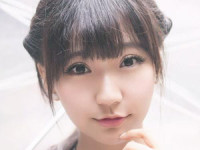如何设计一个手机信息页面?
来源:互联网 发布:网络淘宝兼职可信吗 编辑:程序博客网 时间:2024/05/18 16:56
首先呢,这次操作是在Android Studio平台下进行设计的,效果图如下:
首先将准备好的图标复制到res/drawable文件夹下,也就是上图每个应用的图标,然后便是创建一个垂直的线性布局,注意在android studio中线性布局默认为水平显示,我们需要自动修改为垂直布局,然后在垂直布局中创建四个相对布局,在相对布局中添加相应的TextView,并在values文件下的style.xml文件中存放抽取出来的样式,这里只有英文截图,大家也可自行修改为中文,只要在style.xml中稍作修改即可。好,现在先给大家部分代码:
程序界面对应布局文件activity_mian.xml的代码
<LinearLayout xmlns:android="http://schemas.android.com/apk/res/android"
xmlns:tools="http://schemas.android.com/tools"
android:layout_width="match_parent"
android:layout_height="match_parent"
android:background="@android:color/darker_gray"
android:orientation="vertical"
tools:context=".MainActivity" >
<RelativeLayout style="@style/h_wrap_content"
android:layout_marginTop="10dp">
<TextView
style="@style/tv_style"
android:layout_alignParentLeft="true"
android:layout_marginLeft="10dp"
android:drawableTop="@drawable/clound"
android:text="@string/_cloud" />
<TextView
style="@style/tv_style"
android:layout_alignParentRight="true"
android:layout_marginRight="10dp"
android:drawableTop="@drawable/bluetooth"
android:text="@string/_bluetooth" />
</RelativeLayout>
<RelativeLayout style="@style/h_wrap_content"
android:layout_marginTop="10dp">
<TextView
style="@style/tv_style"
android:layout_alignParentLeft="true"
android:layout_marginLeft="10dp"
android:drawableTop="@drawable/gesture"
android:text="@string/_gesture" />
<TextView
style="@style/tv_style"
android:layout_alignParentRight="true"
android:layout_marginRight="10dp"
android:drawableTop="@drawable/gps"
android:text="@string/_gps" />
</RelativeLayout>
<RelativeLayout style="@style/h_wrap_content"
android:layout_marginTop="10dp">
<TextView
style="@style/tv_style"
android:layout_alignParentLeft="true"
android:layout_marginLeft="10dp"
android:drawableTop="@drawable/info"
android:text="@string/_system_info" />
<TextView
style="@style/tv_style"
android:layout_alignParentRight="true"
android:layout_marginRight="10dp"
android:drawableTop="@drawable/internet"
android:text="@string/_internet" />
</RelativeLayout>
<RelativeLayout style="@style/h_wrap_content"
android:layout_marginTop="10dp">
<TextView
style="@style/tv_style"
android:layout_alignParentLeft="true"
android:layout_marginLeft="10dp"
android:drawableTop="@drawable/language"
android:text="@string/_language" />
<TextView
style="@style/tv_style"
android:layout_alignParentRight="true"
android:layout_marginRight="10dp"
android:drawableTop="@drawable/notifycation"
android:text="@string/_set_notifycation" />
</RelativeLayout>
</LinearLayout>
这是style.xml文件中的代码,可以避免产生大量重复的布局代码:
<resources>
<style name="AppBaseTheme" parent="android:Theme.Light">
</style>
<style name="AppTheme" parent="AppBaseTheme">
</style>
<!-- 宽 match——parent高 wrap_content-->
<style name="h_wrap_content">
<item name="android:layout_width">match_parent</item>
<item name="android:layout_height">wrap_content</item>
</style>
<!-- 宽高都 match——parent -->
<style name="tv_style">
<item name="android:layout_width">145dp</item>
<item name="android:layout_height">90dp</item>
<item name="android:gravity">center</item>
<item name="android:paddingTop">8dp</item>
<item name="android:paddingBottom">8dp</item>
<item name="android:drawablePadding">5dp</item>
<item name="android:background">@android:color/white</item>
</style>
</resources>
这是创建在res文件下的values-zh-rCN、values-en-rUS文件夹下strings.xml文件的代码,因为两个代码十分相似,所以只提供英文代码,中文只需将name后的英文修改为汉字即可:
<?xml version="1.0" encoding="utf-8"?>
<resources>
<string name="app_name">phoneInfo</string>
<string name="menu_settings">Settings</string>
<string name="hello_world">Hello world!</string>
<string name="_cloud">Cloud</string>
<string name="_bluetooth">Bluetooth</string>
<string name="_gesture">Gesture</string>
<string name="_gps">Gps</string>
<string name="_system_info">SystemInfo</string>
<string name="_internet">Internet</string>
<string name="_language">Language</string>
<string name="_set_notifycation">Notifycation</string>
</resources>
最后用户自己需要在MainActivity中编写与用户交互的逻辑代码:public class MainActivity extends Activity {
@Override
protected void onCreate(Bundle savedInstanceState) {
super.onCreate(savedInstanceState);
setContentView(R.layout.activity_main);
}
}
至此所有代码都提供给大家啦,当然可能需要做一些文件名上的修改。在做这次试验项目时,我也遇到一些问题,比如创建在res文件下的两个values-zh-rCN、values-en-rUS文件夹在Android模式下并不显示,在public才会显示。
- 如何设计一个手机信息页面?
- 如何建造一个简单的手机信息页面
- 如何制作一个简单的手机信息页面
- 手机信息页面UI设计
- 如何做好一个手机页面
- 利用Android UI设计手机信息页面
- Android-UI 手机信息页面相关设计
- 做一个Android UI手机信息页面
- Android-UI:一个手机页面信息
- 如何建立一个手机信息界面?
- 运用Android开发环境做一个手机信息页面
- 怎样使用android创建一个手机信息页面
- 用Android Studio编写一个“手机信息页面”程序
- 利用布局简单编写一个安卓手机信息页面
- 手机手机信息页面实现
- Android_手机信息页面
- 手机信息页面
- 手机信息页面1.
- 借助jgrid控件分页查询
- CSS3背景属性和CSS3的渐变
- (8) hadoop 常见错误
- Visual Studio 20周年软件趋势随想
- 直方图内最大矩形
- 如何设计一个手机信息页面?
- 透明度与十六进制代码转换
- 网络爬虫技术
- javascript的apply方法总结
- node百度语音识别
- upload 上传类
- Android_三种菜单介绍
- MySQL中函数CONCAT及GROUP_CONCAT
- JSP页面上实现权限树回显



